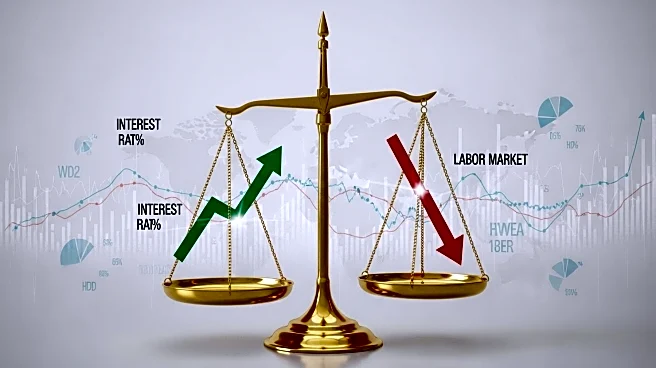What is the story about?
What's Happening?
The U.S. labor market is showing signs of strain as new data reveals a significant increase in jobless claims. According to the Department of Labor, 263,000 claims for unemployment benefits were filed last week, marking the highest level since October 2021. This represents a 27,000 increase from the previous week's revised figures. The four-week moving average of jobless claims has also risen to 240,500, indicating a potential trend of rising layoffs. The Federal Reserve Bank of New York's recent survey highlights growing concerns among Americans about the labor market's stability and the challenges in securing employment. In August, only 22,000 jobs were added, falling short of the 80,000 forecasted by economists. This slowdown in job growth, coupled with a rise in consumer prices by 2.9% in August, suggests a cooling economy.
Why It's Important?
The increase in jobless claims is a critical indicator of the U.S. economy's health, suggesting potential vulnerabilities in the labor market. As layoffs appear to be on the rise, the Federal Reserve may consider adjusting interest rates to stimulate economic activity. The current economic environment, characterized by sluggish job growth and rising inflation, poses challenges for policymakers aiming to balance economic stability with growth. Businesses and workers alike may face uncertainties, with potential impacts on consumer spending and overall economic confidence. The situation underscores the need for strategic economic interventions to prevent further deterioration in the labor market.
What's Next?
The Federal Reserve is expected to meet next week, where it may decide to lower interest rates in response to the latest labor market data. This move could aim to encourage borrowing and investment, potentially offsetting the slowdown in job growth. Stakeholders, including businesses and policymakers, will be closely monitoring the Fed's actions and their implications for the broader economy. Additionally, further government data releases on employment and inflation will be critical in shaping future economic policies.
AI Generated Content
Do you find this article useful?
















